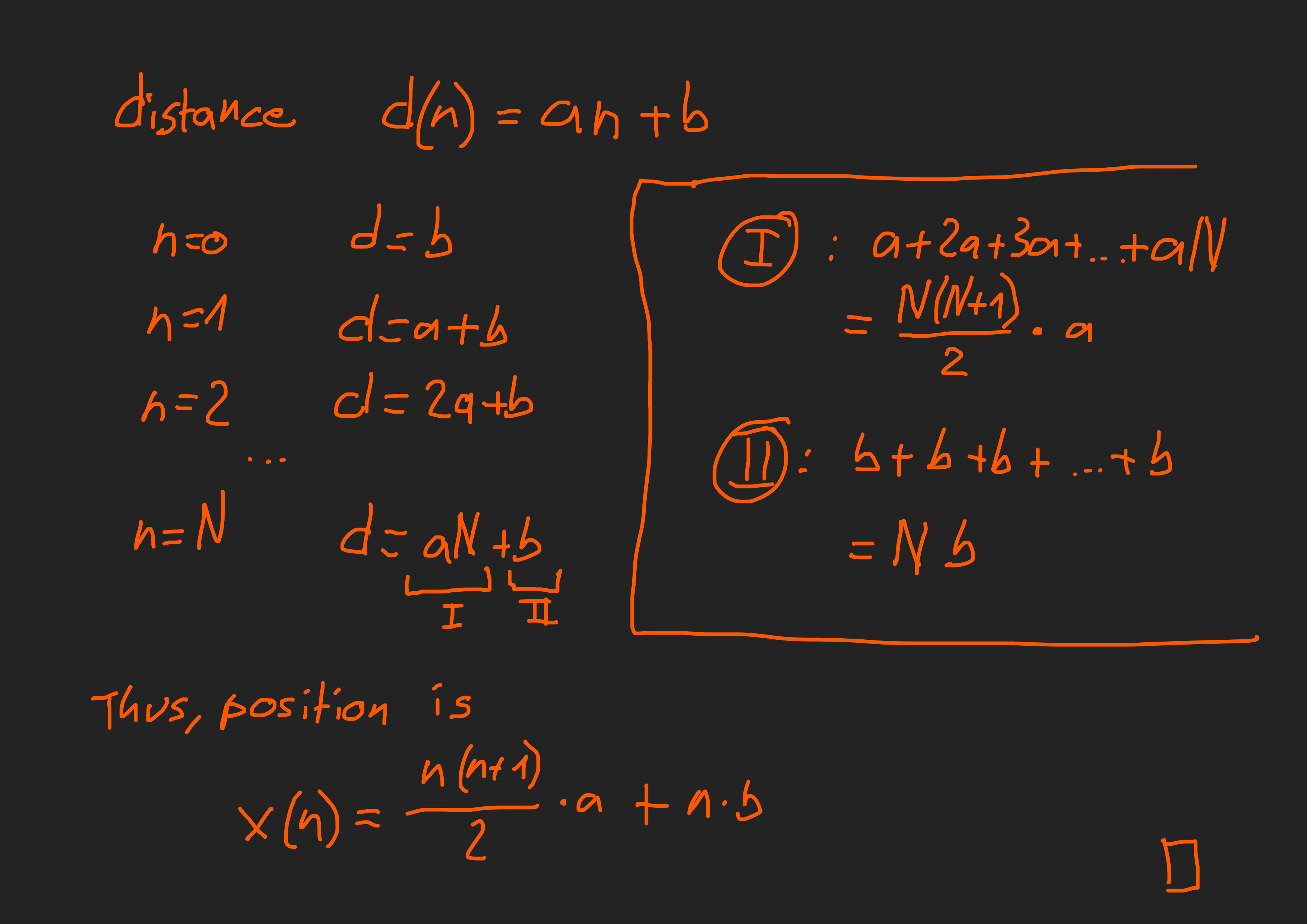First order offset (second order position) with Geometry Nodes
Motivation
We could stay with the current equation for distance and use a Repeat Zone, incrementally increasing the distance for the next point. It works but it's a bit overkill when we could have an equation for position.
From distance to position
So we have the equation for the distance to the next point.
- Let $n$ be the index of the current object
- Let $N$ be the total count of objects
- Let $a$ and $b$ the coefficients (order 1 and order 0)
The distance is given by $d(n) = an + b$. I'm a bit rusty on the math side but let's rework it to express the position :

We get the following function for the position :
$x(n) = \frac{n(n+1)}{2} \cdot a + n \cdot b$
Geometry Nodes
Let's spawn $N$ points. Each point has an index, which will be in our case the $n$ variable in our equations.
We can move all points according to the equation for position. Then it's just a matter of spawning the original object on each of these points. Finally, we Realize Instances otherwise the objects would still be in their instance state.

Note that all 3 inputs ($a$, $b$ and $n$) can be changed from the modifier tab on the right.
Result and blend file







